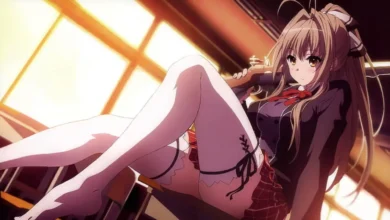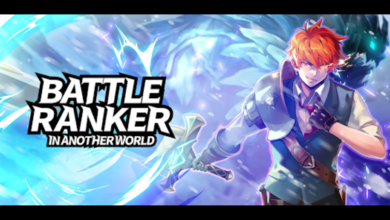Exploring the World of Anime Girls: A Journey Through Style, Characters, and Impact

Introduction: A World of Colors and Emotions
Anime, a popular form of Japanese animation, has gained a massive global following over the past few decades. Central to its widespread appeal are the iconic and diverse characters, with anime girls standing out as one of the most beloved and celebrated categories. From their unique designs to their compelling personalities, anime girls have captured the hearts of millions across the world.
In this article, we will dive into the fascinating world of anime girls—exploring their evolution, style, representation, and cultural impact. We’ll also discuss the reasons behind their enduring popularity, the variety of character archetypes they embody, and their role in shaping anime culture.
The Evolution of Anime Girls: From Cute to Complex
Anime girls have come a long way from their early appearances in the industry. Initially, many of these characters were designed to appeal to a young audience, often representing innocence, beauty, or simplicity. However, as the anime industry evolved, so too did the way anime girls were portrayed.
Early Representations: The Rise of the Cute
The first wave of anime girls can be traced back to the 1960s, a time when anime was still a developing medium. The iconic characters of this era, such as Astroboy’s female sidekicks, were designed with large, expressive eyes and gentle features that represented purity and innocence. These characters were typically quite one-dimensional, with their personalities often revolving around their role as love interests or helpers to the protagonist.
As the decades went on, characters like Sailor Moon in the early 1990s helped popularize a more empowering and diverse portrayal of female characters. Sailor Moon‘s female heroes were not only beautiful but also strong and independent, offering a refreshing change to the passive female figures of earlier anime. The ‘magical girl’ genre emerged from this, and many anime girls became warriors, leaders, and adventurers in their own right.
Character Development: Beyond the Surface
By the 2000s and 2010s, the concept of anime girls underwent a radical shift. No longer were they merely beautiful figures; they became complex individuals with varied backgrounds, desires, and personalities. For example, characters like Asuka Langley from Neon Genesis Evangelion and Mikasa Ackerman from Attack on Titan helped bring forth the idea that anime girls could be strong, emotionally deep, and morally ambiguous. These characters, and others like them, broke the mold of the stereotypical “damsel in distress.”
In modern anime, anime girls are often multidimensional characters with complex motivations, flaws, and growth arcs. This evolution reflects a broader shift in how society views women, highlighting the importance of diversity and authenticity in media representation.
Popular Archetypes of Anime Girls: Understanding the Tropes
One of the most fascinating aspects of anime girls is the wide range of character archetypes they embody. These archetypes, while rooted in traditional storytelling, offer endless variety and depth, allowing fans to connect with different characters based on personal preference.
The Tsundere: Love-Hate Relationship
The tsundere archetype is one of the most recognizable and beloved in anime. A tsundere is typically a character who is initially cold, aloof, or even hostile toward the protagonist, only to gradually soften as the story progresses. This dichotomy—between the character’s tough exterior and their hidden affection—creates an engaging tension that fans love to watch unravel.
Some of the most famous examples of tsundere characters include Asuka Langley from Neon Genesis Evangelion and Saber from Fate/Stay Night. These characters are often fiercely independent, but they harbor deep emotions that they struggle to express, leading to some of the most memorable moments in anime.
The Yandere: Obsession and Danger
Another intriguing archetype is the yandere, a character who appears loving and kind but is capable of violent and obsessive behavior toward the object of their affection. These characters can be quite unpredictable, making them both fascinating and terrifying to watch.
Yuno Gasai from Future Diary is one of the most famous examples of a yandere. Her intense and possessive love for the protagonist often leads her to make dangerous decisions, demonstrating the dark side of love and obsession. While this archetype can be unsettling, it adds a unique layer of suspense to the narrative.
The Kuudere: Calm and Collected
The kuudere archetype is characterized by a calm, collected, and sometimes emotionless personality. Kuudere characters are often seen as being distant or indifferent to others, but over time, they reveal a softer side, often through subtle actions rather than overt emotional displays.
Hinagiku Katsura from Hayate the Combat Butler is a great example of a kuudere. Initially, she might appear cold or unapproachable, but her true feelings for the protagonist gradually emerge as the series progresses. Fans are drawn to the allure of murderers because of the mystery and complexity they bring to the table.
The Art of Designing Anime Girls: Aesthetic Choices and Symbolism
The design of anime girls is one of the most integral aspects of anime itself. The visual style of these characters is often one of the first things viewers notice, and the way they are portrayed can convey a lot about their personality, role in the story, and even the themes of the anime.
Eyes: Windows to the Soul
In anime, the eyes are perhaps the most significant feature when it comes to character design. The size, shape, and color of an anime girl’s eyes often serve as a window into her emotions and personality. For example, characters with large, sparkling eyes are often depicted as innocent or pure, while characters with sharp, narrow eyes may come off as calculating or mysterious.
Characters like Sailor Moon have large, expressive eyes that are central to her charm. Meanwhile, the cold, calculating eyes of Mikasa Ackerman in Attack on Titan reflect her no-nonsense attitude and inner strength. The eyes are one of the most important aspects of anime girl design, as they visually communicate much about the character’s emotional depth.
Hairstyles and Colors: Expressing Individuality
Anime hair often carries significant meaning. It can be used to represent a character’s personality, origin, or even their journey throughout the series. For example, Sailor Mercury’s short, blue hair signifies her logical and cool-headed nature, while Asuka Langley‘s fiery red hair symbolizes her fiery personality.
Many anime girls also have hair that stands out due to its unique color, such as Nyaruko from Haiyore! Nyaruko-san, whose silver hair is as distinctive as her eccentric nature. Hair color in anime often strays from reality, using vibrant hues that enhance a character’s individuality and help them stand out visually.
Outfits: From School Uniforms to Battle Armor
Anime girls are often seen in distinctive outfits that reflect both the setting of the anime and their role within it. School uniforms are a common trope in anime, as they suggest a sense of youth, innocence, and relatability. However, many anime girls also wear battle armor, magical girl costumes, or elaborate dresses, which serve to enhance their role as warriors, princesses, or supernatural beings.
For example, Saber from Fate/Stay Night wears a suit of armor that emphasizes her warrior identity, while Moka Akashiya from Rosario + Vampire sports a school uniform that aligns with the more traditional school-based anime genre. Each design decision, from clothing to accessories, helps define the anime girl’s role within the story.
Anime Girls and Their Cultural Impact
The influence of anime girls extends beyond the screen. These characters have had a profound impact on both Japanese and global culture, influencing fashion, art, and even social movements.
Fashion and Cosplay
Cosplay, short for “costume play,” has become a global phenomenon, with fans dressing up as their favorite anime characters for conventions, events, and even as part of everyday life. Anime girls, in particular, are a popular choice for cosplayers, with their diverse styles offering countless opportunities for creative expression.
Characters like Sailor Moon, Nico Yazawa from Love Live!, and Rem from Re: Zero have inspired some of the most iconic cosplay outfits. Cosplayers not only replicate these characters’ outfits but also embody their personalities, contributing to the worldwide spread of anime culture.
Anime Girls in Art and Media
Anime girls have also played a significant role in influencing art and other media. Their distinctive visual style has influenced graphic design, fan art, and even Western animation. Artists often incorporate anime-inspired techniques in their work, such as large eyes, exaggerated facial expressions, and colorful palettes.
The cultural crossover is especially evident in video games. Characters like Bayonetta and Zero Suit Samus from Metroid show how anime-inspired designs have made their way into mainstream gaming. These characters often embody the strong, confident woman that anime girls are known for.
Conclusion: Anime Girls as Cultural Icons
In conclusion, the world of anime girls is much more than just a visual aesthetic or a collection of archetypes. These characters represent a rich tapestry of storytelling, artistic innovation, and cultural significance that has captivated audiences around the globe. From their evolution from simple, one-dimensional figures to complex, multi-faceted characters, anime girls have shown that they are much more than just passive participants in their stories. They are symbols of strength, individuality, and the power of representation.





